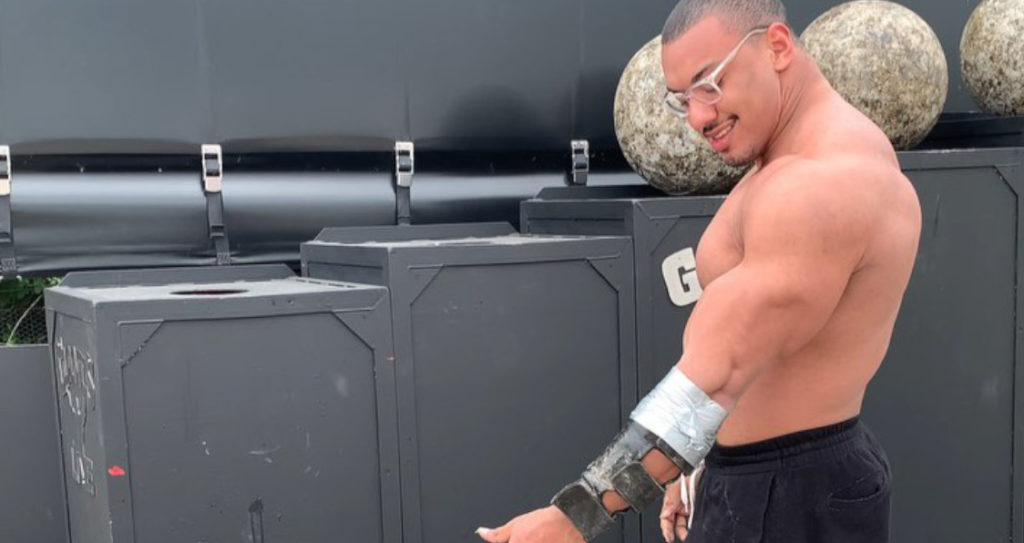
Following on from our previous blog on bicep tendon injuries, we will be sharing with you the various signs and symptoms of a biceps tendon rupture, and what you should do if you suspect one. To cover the other end of the spectrum (an injured, but intact biceps), we will also be sharing some simple exercises to help kickstart the rehab process in the early stages.
A ruptured bicep tendon tends to be rather obvious, and not something you will be in doubt over. These are the main things you will likely experience.
* Although these are the common signs and symptoms, do remember that everyone is different, and you might experience things differently. When in doubt, get yourself assessed by a qualified health professional!

Most bicep tendon ruptures will require surgical repair, and the outcomes are better the sooner this is performed. Thus, getting an assessment by an orthopaedic specialist should be the priority. Visit the nearest NHS minor injuries clinic to get yourself booked into the orthopaedic emergency clinic. In the meantime, put your arm in a sling, ice the area frequently, up to 20 minutes at a time, and don’t use the injured biceps.
If you have private health insurance (or self-paying), you can phone your provider to request for an urgent referral to a specialist in this field. ESP’s preferred orthopaedic consultant for surgical management of these injuries is Mr Andrew James Brooksbank, consulting out of Ross Hall in Glasgow.
Following your surgery, you will be advised to follow a guided physiotherapy rehabilitation program. With an experienced surgeon, and a comprehensive physiotherapy program, most athletes can make a full recovery to competition within 9-12 months., and sometimes even quicker!
Once we are sure there isn’t a rupture, we suggest using the POLICE guidelines which applies to both tendon and muscle injuries.
P – Protect
Protect the tendon from further injury. This means that you stop the movements that makes the pain worse, or even taping the bicep muscle and tendon to offload it temporarily. Forget the no pain, no gain, tough it out mentality, and give the biceps muscle/tendon a chance to settle down. You can expect things to calm down and start the repair response within 72 hours.
OL – Optimal Loading
Once things have settled, you will want to start gradually loading the muscle/tendon. This is because complete rest or immobilization does not help injuries to heal quicker, and in fact, might slow down the recovery process. (Article link to police guidelines here)
A combination of stretches and/or light exercises might be helpful as well (see this in the next section below). Meanwhile, continue with your daily activities and use your arm as much as possible with minimal pain.
*Do not load the tendon if you suspect a rupture. Follow the instructions in the section discussing a biceps rupture!
I – Ice
Ice the painful area for 10-20 minutes several times per day for the first few days. This is to help with pain and reduce inflammation. You can stop when the pain settles.
C – Compression
Compression devices such as tubigrips, neoprene sleeves or compression cuffs can help support the muscle, and minimise inflammation. This is most helpful if there is swelling in the area.
E – Elevation
In the first few days of the injury, try to keep the arm elevated above the heart. This will help reduce the number of inflammatory cells flowing into the bicep muscle. Similarly, this is most helpful if there is swelling in the area.
Here are some exercises you can try to load and gently stretch the injured area. Follow the exercise prescription advice in the description of each Instagram video.
If your pain/symptoms are getting worse with these exercises, stop and consult a qualified health professional.
Gradual and progressive loading is the key to fixing bicep injuries. At ESP, our qualified physiotherapists perform a thorough assessment to assess the full extent of the injury. We can help manage your pain with various soft tissue treatments, and modalities. Following which, a personalised exercise program will be designed to gradually load the injured area, and address the various causes of your injury to prevent it from happening again.
With that, we have come to the end of our blog series on bicep injuries. If you would like to be assessed by one of our physiotherapists, you can book yourself in for an appointment here! Alternatively, call us at 01324 227 370 or drop us an email at info@espphysio.comand we will get you sorted!